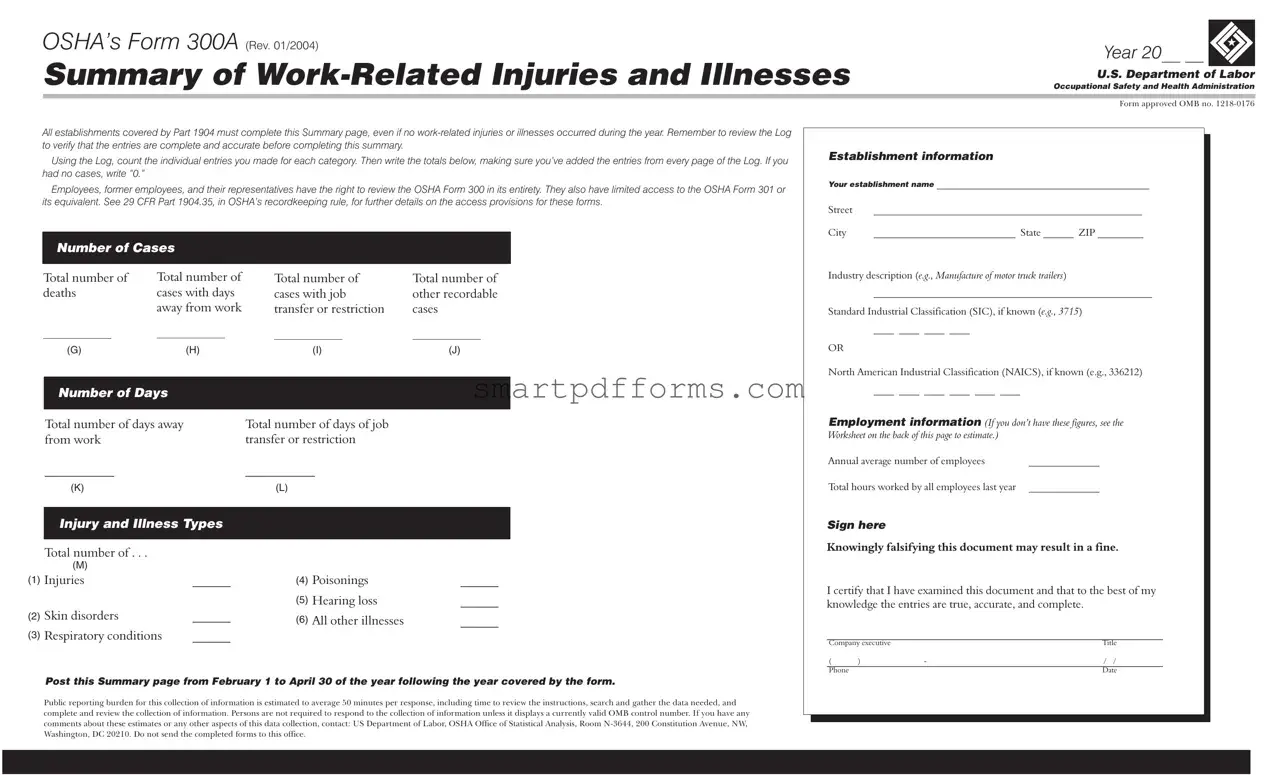At the heart of workplace safety and regulatory compliance, OSHA’s Form 300A stands as a critical document required by the Occupational Safety and Health Administration (OSHA). Crafted to provide a yearly summary of work-related injuries and illnesses, it plays a pivotal role in ensuring that the environments where people work are as safe as possible. All establishments that fall under Part 1904's mandate find it obligatory to fill out this summary page, irrespective of whether or not any work-related injuries or illnesses were recorded during the year in question. The form insists on a careful review of the Log to affirm the completeness and accuracy of entered data, underlining the seriousness with which this documentation must be treated. Beyond its function as a record-keeping tool, Form 300A embodies the right of employees, former employees, and their representatives to review not only the Form 300 but also have limited access to Form 301 or its equivalent. This accessibility emphasizes OSHA’s commitment to transparency and accountability in occupational health and safety. Notably, the form requires details such as the number of cases, deaths, injuries, and illnesses by type, alongside employment information like the annual average number of employees and total hours worked. The responsibility to post this summary from February 1 to April 30 of the following year further exemplifies its role in fostering an informed workforce, aware of their workplace's safety performance. The caution against falsification, coupled with the requirement for a company executive’s certification, underscores the form's legal and ethical significance within the broader framework of workplace safety regulations.

